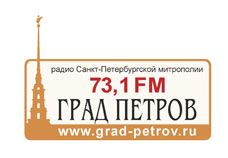The Barocco Concertato ensemble comprises:
Konstantin Yakovlev (baroque bassoon, oboe)
Maria Krestinskaya (baroque violin, viola d'amore)
Sergey Filtchenko (baroque violin)
Svetlana Grinfeld (baroque violin)
Ksenia Timofeyeva (baroque violin)
Alexander Gorbunov (baroque viola)
Rust Pozyumskiy (viola da gamba)
August Krеpak (baroque cello)
Elizaveta Panchenko (harpsichord, organ)
Konstantin Schenikov-Arkharov (theorbo, archlute, percussion)
Katerina King (baroque harp)
Director of the ensemble: Maria Krestinskaya
The St Petersburg early music ensemble Barocco Concertato was founded in 2011.
The orchestra performs music of the Renaissance, Baroque and Classical eras. The ensemble's soloists play early instruments, striving to attain the same practice of historically informed performance.
The name of the ensemble refers to the Baroque stile concertato. In such works it was vital to reconcile the "competing" voices or groups of instruments – the Italian word "concertare" means "to concur" or "to attain team-playing".
The richness of the instrumental timbres brings the Barocco Concertato close to a Baroque orchestra: here there are such instruments as the Baroque violin, the viola d'amore, the theorbo, the archlute, the Baroque bassoons and oboes, the viola da gamba, the harpsichord, the organ and percussion. The regular musicians are frequently joined by guest performers.
The soloists of the Barocco Concertato have trained at master-classes given by such leaders of the authentic performance movement as Maria Leonhardt (The Netherlands), Peter Van Heyghen (Belgium), Andrew Manze (Great Britain), Bob van Asperen (The Netherlands), Vittorio Ghielmi (Italy), Hugo Reyne (France), Michel Laplénie (France), Andrew Lawrence-King (Great Britain) and Andrei Reshetin (Russia).
The musicians take part in prestigious early music festivals in St Petersburg, Boston, Utrecht (The Netherlands), Vantaa (Finland) and Sanssouci (Potsdam, Germany). All of the ensemble's members have been prize-winners at international competitions.
For more detailed information about the performers please go to: www.baroccoconcertato.com
The Alta Capella ensemble comprises:
Ivan Velikanov (cornetto, organ)
Alexandra Mikheyeva (sackbut)
Andrian Printsev (sackbut)
Mikhail Olenev (sackbut)
Eugene Kozharov (sackbut)
Director of the ensemble: Ivan Velikanov
Alta Capella is the first Russian ensemble of Renaissance and Baroque wind instruments. The ensemble was founded in 2009 by graduates, students and post-graduates of the Moscow Conservatoire. The musicians perform on authentic copies of historical instruments: the sackbut, slide trumpet, zink (cornetto), schalmei, bombarde and dulcian.
The name Alta Capella refers back to the 14th–15th centuries – that was the name given to an ensemble of three or four loud wind instruments performed from a height, a balcony or a gallery. The word "alta" (loud, high), probably also envisaged the performance of lofty (spiritual) music for high-born nobles.
The ensemble's repertoire includes medieval spiritual and secular music, works by composers of the Dutch school, Italian and English consort music and also Lutheran music of three centuries from Walther and Praetorius to Bach.
Alta Capella collaborates with such performers as Alexei Lyubimov, Anatoly Grindenko, Dmitry Sinkovsky, Dmitry Stepanovich and Andrei Nemzer. In 2011 with the participation of Andrei Nemzer the ensemble recorded the disc Fili mi, Absalon. Heinrich Schutz and His Italian Contemporaries.
The ensemble performs solo programmes at the Moscow Conservatoire, the State Institute of the History of Art and the Atrium of the Stanislavsky and Nemirovich-Danchenko Moscow Musical Theatre and takes part in early music festivals in Yehiam (Israel), Brunoy (France), St Petersburg and Moscow in addition to organising the International Festival of Music and Dance La Renaissance (since 2011). The festival has witnessed the Russian premieres of Claudio Monteverdi's Vespro della Beata Vergine and a stage version of the medieval 14th century poem Roman de Fauvel.
The ensemble's musicians have trained on summer courses of early music in Urbino under Bruce Dickey (Italy) and taken part in international master-classes conducted by Martin Lubenow (Germersheim, Germany), William Dongois, Stéphane Léger and Wim Becu (Moscow, Bremen, Salzburg).
In 2012 soloists of the ensemble were prize-winners at the International Young Artists' Presentation Competition, which is run as part of the festival Laus Polyphoniae in Antwerp.
For more detailed information about the performers please go to: www.altacapella.ru

